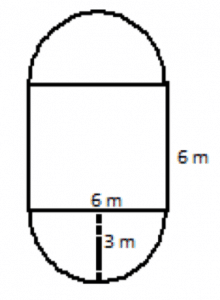Terms of USe
About DSST Prep
DSSTPrep
10900 Research Blvd Ste 160C PMB 1356 Austin, TX 78759
1-800-421-0544
support@dsstprepcourses.com

“What is mathematics? … It’s certainly not just a fixed body of knowledge, … its hidden tendrils pervade every aspect of modern life.” — Ian Stewart
The Math for Liberal Arts DSST exam covers topics such as real number systems; sets and logic; metric system; conversions and geometry; algebra, graphs and functions (as applied to real life applications); linear systems and inequalities; exponents and logarithms including financial literacy and counting; probability theory and statistics. The use of a non-programmable calculator is permitted in this exam.
The following is an outline of the content areas covered in the examination. The approximate percentage of the examination devoted to each content area is also noted.
I. Real Number Systems – 11%
II. Sets and Logic – 16%
III. Metric system, conversions and geometry – 12%
IV. Algebra, graphs and functions (as applied to real life applications)– 11%
V. Linear Systems and Inequalities – 8%
VI. Exponents and Logarithms including Financial Literacy – 22%
VII. Counting, Probability Theory and Statistics – 20%
All test questions are in a multiple-choice format, with one correct answer and three incorrect options. The following are samples of the types of questions that may appear on the exam.
1. Heidi and Oliver are planning to buy a bedroom furniture set that costs $4,100 plus 6% taxes. They would like to apply for a 0% APR store credit card on purchases for 10 months. How much money do they need to pay in equal installments monthly for the next 10 months such that they will be able to pay off the bedroom furniture set before the 0% APR offer expires?
2. An electronics store sold 1,500 computers and smartphones in a month. Out of the total number of consumers who purchased these items, 2% bought a computer and a smartphone, while the others bought only a computer or a smartphone. If 1,206 consumers bought smartphones, how many people bought computers?
3. If the figure below is constructed out of two semicircles and a square, what is the area of the whole figure? (Round to the nearest tenth of a meter squared)

4. Write a variable expression for the area of a square whose side length is (x + 8) units.
5. The population growth of an animal species is described F(t) = 320 log(4t + 4), where t is the number of months since the species was introduced. Find the population of this species 8 months after the species is introduced to an area. Round to the nearest whole number.
6. Find the mode for the following data: 12, 12, 12, 14, 16, 18, 20, 22, 25, 25, 29, 33, 37, 37, 39.
7. The function f(x) = 2.4 + 8 ln x, given in centimeters, models the height of a certain animal species where x is the number of days the animal has been alive. Determine the height of the animal after it has been alive for 16 days.
8. Determine the logical conclusion for the arguments below:
Some college students join school sponsored clubs. No school sponsored clubs endorse bullying.
Answers to sample questions:
1-D, 2-A, 3-C, 4-C, 5-A, 6- A, 7-D, 8-C
Backed by Our Money-Back Guarantee!
Here’s what you need to know about this exam:
DSSTPrep
10900 Research Blvd Ste 160C PMB 1356 Austin, TX 78759
1-800-421-0544
support@dsstprepcourses.com
© 2025 All rights reserve